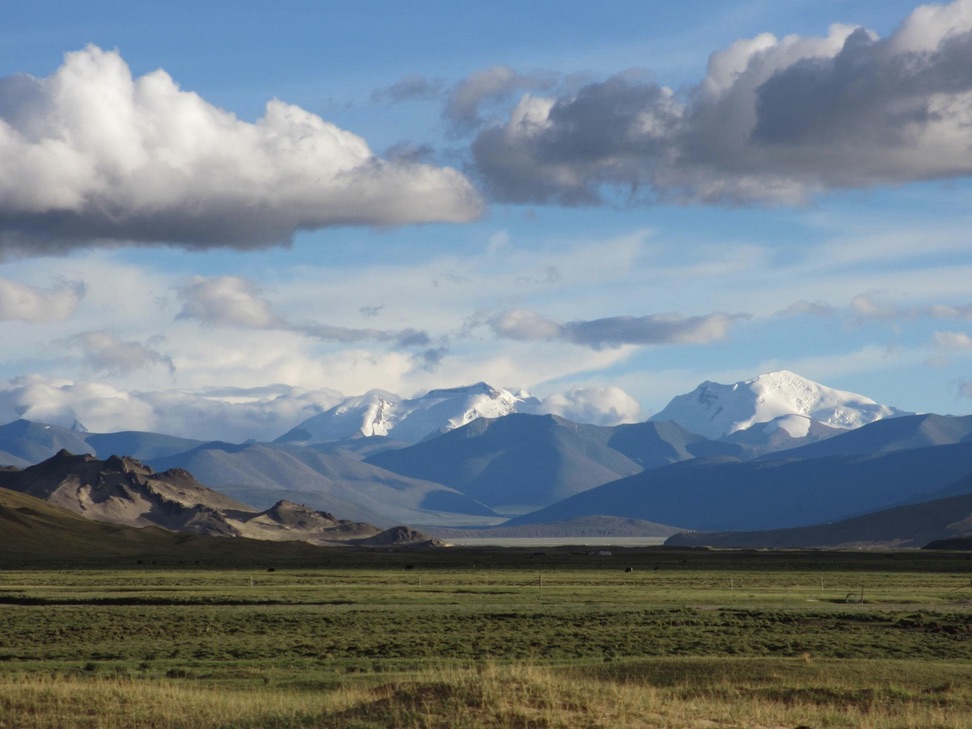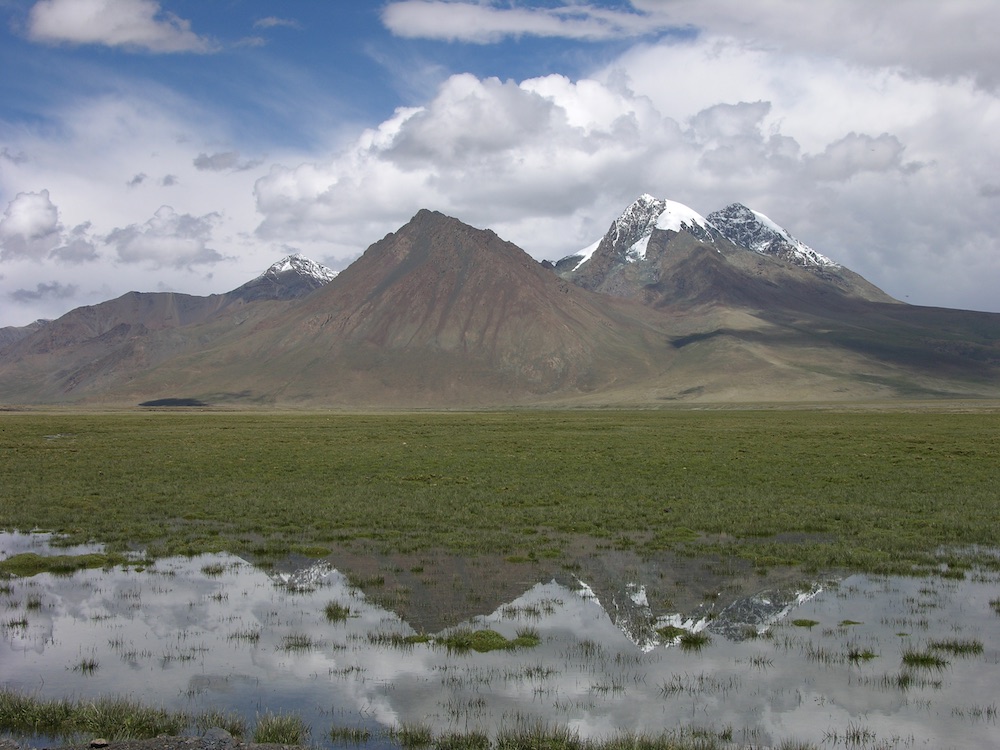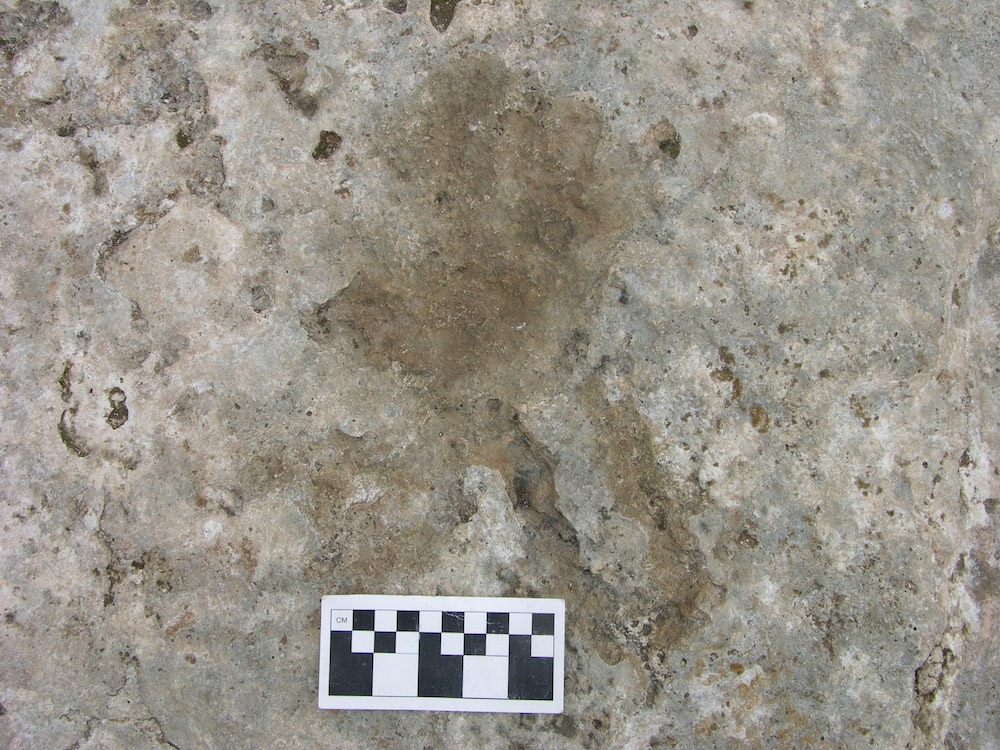Tibetans Lived in Himalayas Year-Round Up to 12,600 Years Ago

Thousands of years ago, people living on the high mountains of the Tibetan plateau waded into a steamy hot spring, leaving behind footprints in the soft mud. These footprints, which were discovered in 1998, have proved invaluable to modern-day researchers, who recently dated them to between 7,400 and 12,600 years ago.
Based on earlier analyses of other human sites, it was thought that the plateau's earliest permanent human residents had settled there no earlier than 5,200 years ago, the researchers said. But these newfound dates make the ancient Tibetan site of Chusang the oldest permanent base of people on the Tibetan plateau, they said.
Older known human camps do exist in the region, dating to between 9,000 and 15,000 years ago, but they were likely short-term, seasonal sites, the researchers said. [See Photos of Chusang, the Oldest Known Site Occupied Year-Round on the Tibetan Plateau]
"Chusang is special because you have these human footprints in this carbonate mud," said study co-lead researcher Michael Meyer, an assistant professor of geology at the University of Innsbruck in Austria. "[The footprints] are hardened, so they were able to stay there for thousands or tens of thousands of years."
Dating Tibetan prints
After humans left Africa, they spread across the globe, but it's not entirely clear when they made it to the mountainous region of Tibet, the researchers said. So, when the Chusang site, which shows clear signs of ancient human occupation, was discovered in 1998, researchers rushed to study it.
The 19 human handprints and footprints were found near Chusang, a village known for its hydrothermal springs, located on Tibet's central plateau at an elevation of about 14,000 feet (4,300 meters) above sea level.

A previous attempt to date the prints estimated that they were 20,000 years old, according to a 2002 study published in the journal Geophysical Research Letters. But the region's complex features, such as its sedimentology, raised the possibility that this estimate was "severely flawed," prompting the new study's researchers to take another look, this time using three different dating techniques, they wrote in the study.
Sign up for the Live Science daily newsletter now
Get the world’s most fascinating discoveries delivered straight to your inbox.
These dating techniques included thorium/uranium dating of samples taken from and next to the prints, optically stimulated luminescence (OSL) to determine the date of quartz crystals in the travertine (the sedimentary layer containing the prints), and radiocarbon dating of microscopic plant remains at the site.
The three methods gave the researchers a broad time range, showing that the prints could have been made anywhere between 7,400 years ago and 12,600 years ago, the researchers said. Intriguingly, earlier genetic studies suggested that a permanent population on the high central plateau dates to at least 8,000 to 8,400 years ago, a time frame that fits into the newfound window for the site, the researchers said.
Permanent base
Meyer and his colleagues think these early dwellers of Chusang would have been permanent residents. Their conclusion is based on the logistics of travel to the high-elevation site.

According to estimates from computer modeling, the round-trip travel times from a lower-elevation base camp to Chusang would have taken anywhere from 28 to 47 days. Moreover, this route would have crossed the eastern Himalayan range, which would have been impassable for much of the year during the early Holocene (an epoch that started about 11,500 years ago), they said. Another, more passable route would have taken 41 to 71 days round trip, the researchers said. [In Photos: Hiking the Himalayas]
"Such travel is unlikely to have been undertaken for seasonal, short-term task pursuits in rugged, mountainous terrain, particularly by age-variable groups that may have included children, as is suggested by the presence of small footprints at Chusang," the researchers wrote in the study.
Rather, Chusang was likely a permanent settlement, one that occurred before people began using agriculture in the area, the researchers said. What's more, from about 11,500 to 4,200 years ago, the region was wetter and more humid than it is today, which would have helped the people living there survive, the researchers said.
"The story might not end here," Meyer told Live Science. "There is a chance that there are older sites up here. I think we have to keep exploring."
The study was published online today (Jan. 5) in the journal Science.
Original article on Live Science.

Laura is the archaeology and Life's Little Mysteries editor at Live Science. She also reports on general science, including paleontology. Her work has appeared in The New York Times, Scholastic, Popular Science and Spectrum, a site on autism research. She has won multiple awards from the Society of Professional Journalists and the Washington Newspaper Publishers Association for her reporting at a weekly newspaper near Seattle. Laura holds a bachelor's degree in English literature and psychology from Washington University in St. Louis and a master's degree in science writing from NYU.










